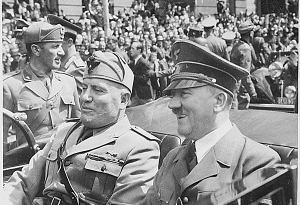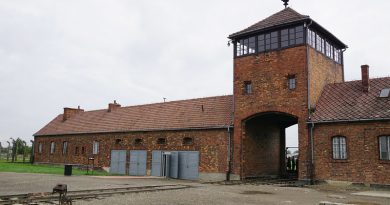The Polish Diaspora
The Polish diaspora is widespread and has been notably oppressed for centuries by a number of different external forces. This has caused it to become dispersed throughout the world, with particularly heavy concentrations found throughout Europe and North America. The United States has the largest Polish diaspora population, numbering around 9.5 million. Other countries with significant Polish populations include Germany (2.9 million), the United Kingdom (2 million), Canada (1.1 million), France (1 million), Russia (300,000), Ukraine (144,000) and Ireland (123,000).
The Polish diaspora’s history is heavily entwined if not entirely synonymous with that of the Jewish diaspora. Indeed, the Polish nation is historically defined by its constant encroachment by larger neighbouring powers such as Russia and Germany. The country has been partitioned multiple times. Poles have faced regular ethnic persecution throughout their nation’s history, something which has encouraged repeated waves of emigration. The Partitions of Poland at the end of the 18th Century caused considerable population displacement as the Polish state (and the Lithuanian state) was effectively dissolved for over a century. Many Poles fled the country to avoid persecution. The Russian, Prussian and Austro-Hungarian Empires all pressurised the fragile country, eventually absorbing it entirely. Polish Jews were particularly oppressed during this period and dispersed throughout Europe to evade further persecution. Additionally, the absorption into these powers saw the Polish population absorbed into the various polities, accounting for the historical Polish communities in Austria, Germany and Russia.
The aftermath of the First World War saw the establishment of the Second Polish Republic and a slow rebuilding of the fractured and oppressed state. This became home to the largest Jewish population in the world, with many refugees from neighbouring countries arriving to escape persecution under authoritarian and anti-Semitic regime. This would prove to be short-lived as Poland was once again devastated by the imperialism of its neighbours Nazi Germany and the Soviet Union. During the Holocaust, over 3 million Polish Jews were killed, devastating both national and religious populations.
The Second World War caused devastation and considerable displacement amongst the Polish population, something which only increased in its aftermath. With the establishment of the Jewish state of Israel, a large number of Polish Jews immigrated there in hopes of escaping the persecution that had plagued them for so many centuries. The Polish diaspora also expanded throughout Europe and further afield to the Americas and Australia to begin new lives far from the carnage wrought upon the country by the Second World War and the Holocaust. Poland eventually fell under Communist rule for much of the latter half of the 20th Century, which saw a number of its more dissident citizens flee for democratic nations, albeit at a lower rate.
The final major instigator of Polish immigration was marked by the country’s admittance into the European Union in 2004. This allowed Polish workers to seek employment more easily in Western European countries such as the United Kingdom and France. The UK and Ireland in particular saw Polish populations skyrocket, which now constitutes the latter’s largest ethnic minority. Over 2 million Poles have emigrated in under 20 years, one of the largest expansions of the diaspora in history.
America
The United States’ Polish population is the largest in the world outside of Poland, with an extensive history. Polish immigration to the United States can be divided into three distinct phases. The first of which occurred in the late 19th Century up until the outbreak of the First World War. While small clusters of Polish immigration to the United States occurred prior to this (most notably in William Raleigh’s aborted Roanoke Colony in the 16th Century), major settlements did not occur until long after the Partitions of Poland. The main instigator behind the first wave of Polish immigration to the US was the Franco-Prussian War, which had a devastating effect upon Poles, who faced overwhelming and unbearable poverty at home. A large community congregated in the Eastern city of Baltimore, where it remains intact today, but the population dispersed widely throughout the country. It is believed that over 1.5 million Polish immigrants arrived in the United States during this period. The community achieved a sense of solidarity and unity which had evaded them in Europe due to the geographical and political divisions imposed on them by the various superpowers that had carved their home up.
The Polish population of the United States found work in working class sectors such as agriculture and mining, which suited their experience at home. The growth of the community was halted by the introduction of strict immigration quotas by the US government in the 1920’s. Despite this, the sheer magnitude of the first wave of immigration was sufficient to allow the Polish community to flourish in the country. A number of cultural institutions were established during this period celebrating Poland’s rich and extensive cultural history, something they were unable to do at home due to constant oppression and instability. The second wave of Polish immigration occurred following the beginning of the Second World War. Poland was invaded and its population underwent a vicious genocide under Nazi Germany. Large swathes of the population fled overseas, with the United States being a popular destination due to the large pre-existing community there. This period of immigration occurred between the outbreak of the Second World War and the collapse of Communism in Poland in 1989.
Initially, Poles in this wave tended to settle in major urban centres, with large communities developing in Baltimore, New York City, Chicago and Detroit. As the 20th Century progressed however, the populations dispersed, settling in suburbs. This was particularly the case in Detroit, which was known for its ‘white flight’ which left the city a shell of its former self.
The final wave of Polish immigration occurred following the fall of the Berlin Wall and the subsequent collapse of Communism across the Eastern Bloc. A large number of Poles who felt stifled under the Communist regime and were unable to leave, decided to relocate to the United States, due to the stark contrast with the Eastern Bloc as well as the multitude of large Polish communities throughout the country. The majority settled in Chicago, which remains the largest Polish enclave in the country in the present day.
Eastern Europe
Eastern Europe has a significant Polish population due to centuries of political turbulence in the region. Indeed, there are large Polish communities in Russia, Belarus, Lithuania, Latvia and Ukraine. This is due to a wealth of historical factors. Poland’s national identity has regularly been an issue throughout the country’s existence and it has often fallen under the control of various large superpowers. This has, over a number of centuries, caused its population to scatter throughout Eastern Europe. The partitions saw Poles scattered throughout the Russian, Austro-Hungarian and Prussian Empires. As a result, the Polish diaspora has a heavy presence throughout Eastern Europe. Further incidents such as the Second World War and the rise of Communism saw this diaspora increase significantly. Poles remain a sizeable minority throughout Eastern Europe in modern times and have dealt with considerable oppression and racism. While the situation has improved in recent years, anti-Polish sentiment remains a distasteful reality across Eastern Europe.
Western Europe
Similarly, the partition of Poland had led to the establishment of a large Polish community in Central and Western Europe. The most notable case is in Germany, which is home to the world’s second-largest Polish population. Poland’s incorporation into Prussia saw a large number of Poles settle in the region that is now known as Germany. Poles in Germany have dealt with near-constant prejudice and oppression, their adherence to Catholicism and Judaism deepening the contrast with the overwhelmingly Protestant Germany. They were subjected to the cultural pogrom of Germanisation throughout the 19th Century. The population spread throughout the country as the country underwent a rapid industrialisation process. Following the establishment of a Polish state in the wake of the First World War, a number of German regions were ceded to the new country, which intensified resentment towards Poles amongst Germany.
The rise of Nazism and the annexation of Poland prior to the Second World War caused significant population displacement. Following the Second World War, the Polish population bled into Germany as the former country’s borders shifted westwards. The Polish community remained massive in Germany and steadily grew throughout the 20th Century. Large numbers of Poles migrated to East Berlin due to the wealth of job opportunities there. Additional numbers fled to West Berlin to escape Communism. Poland’s admission to the European Union was another major turning point, with Germany being the most popular destination due to its close proximity and wealth of jobs opportunities. The population is widely dispersed throughout the country although the states of North Rhine-Westphalia and cities such as Dusseldorf and Cologne have the largest communities.
Other Western European countries saw a considerable rise in Polish immigration following its acceptance into the EU included the United Kingdom and Ireland. The United Kingdom’s Polish community had existed long before this, with many Poles settling in the UK to escape the discord surrounding its national crisis in the Partition period.

Former Labour Party Leader Ed Miliband is the son of Polish Jews who left Poland. Riots Panel, Flickr Creative Commons
The two nations forged a strong alliance, with a large number of Poles settling in Britain following the Second World War. 2004 was a clear turning point however, and saw a large volume of economic migrants from Poland arrive in the country. The Polish community of Britain is now one of the largest immigrant communities in the country, with Polish being the third-most-spoken language after English and Welsh. Ireland also saw a high volume of Polish immigration to such an extent that over a short period Poles have become the nation’s largest ethnic minority.
The Polish diaspora is one of the less-mentioned immigrant stories in history but without a doubt one of the most significant. Through centuries of persecution, Poles have been plagued with prejudice and questions about their nationality but have bravely persevered. While Poland is finally recognised as the state it rightly is, its diaspora population throughout the world has set up a series of communities proudly celebrating its rich culture and history.
Main image: Polonia and Poles Abroad Day, Athens, 2008.






